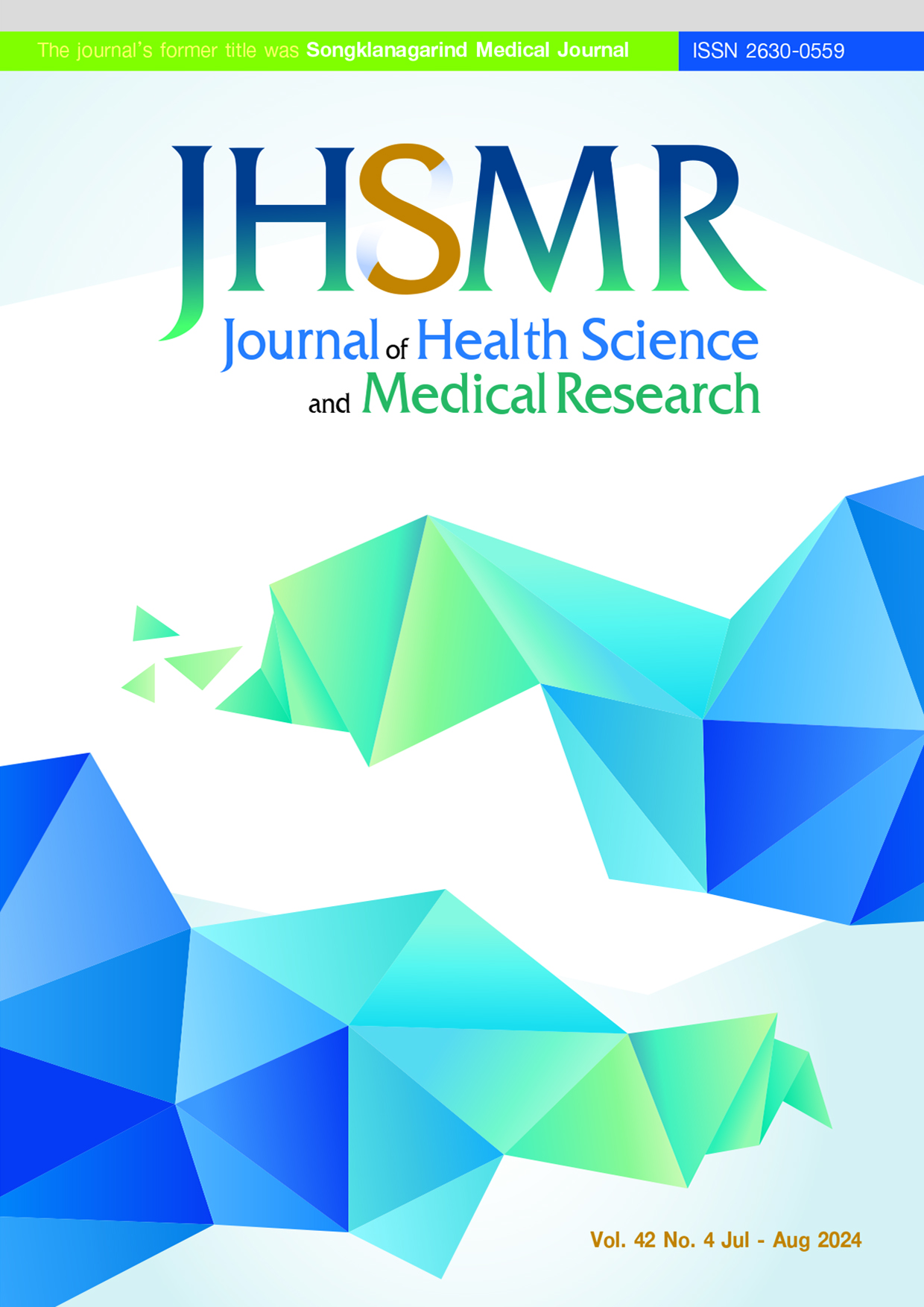Hemodialysis-Related Infections: A 4-Year Surveillance
DOI:
https://doi.org/10.31584/jhsmr.20241043Keywords:
access, g-chart, Hemodialysis, infection, outbreak, surveillance, vascularAbstract
Objective: To analyze the results from the surveillance of hemodialysis-related infections.
Material and Methods: Data was prospectively gathered from outpatients attending a hemodialysis unit from April 2019 until March 2023. The National Healthcare Safety Network (NHSN) Dialysis Event Surveillance was used to identify three types of infection-related dialysis events. Event rates were calculated and stratified by vascular access type, standardized infection ratios for bloodstream infections (BSI), intravenous antimicrobial starts, and described pathogens identified among BSI.
Results: A total of 2,288 patient-month follow-ups were included. There were 79 infection-related dialysis events (24 BSI; 46 intravenous antimicrobial starts, nine pus, redness, or increased swelling at the vascular access site). The incidence of BSI per 100 patient-months was 1.05 (0.59 arteriovenous fistula, 0.83 arteriovenous graft, and 2.22 central venous catheter). Seventeen BSI were vascular access-related. Access-related BSI per 100 patient-months was 0.74 (0.39 arteriovenous fistula, 0.41 arteriovenous graft, and 1.85 central venous catheter). Intravenous antimicrobial starts per 100 patient-months was 2.01 (0.98 arteriovenous fistula, 2.62 arteriovenous graft, and 3.14 central venous catheter). Most events occurred in patients with a central venous catheter. When benchmarked with the 2014 NHSN, the standardized infection ratio of BSI, access-related BSI, and intravenous antimicrobial starts were 1.40, 1.26, and 0.55, respectively. The most serious outcome was BSI; resulting in 83.3% hospitalizations, 25% loss of vascular access, and 15.8% deaths.
Conclusion: Surveillance of infection-related dialysis events is important for prevention. These events were highest among patients with a central venous catheter compared with other vascular access types.
References
Centers for Disease Control and Prevention: Dialysis Event Protocol. [homepage on the Internet]. Atlanta: Centers for Disease Control and Prevention; 2023 [cited 2023 Oct 29] Available from http://www.cdc.gov/nhsn/PDFs/pscManual/8pscDialysisEventcurrent.pdf.
Ikizler TA, Burrowes JD, Byham-Gray LD, Campbell KL, Carrero JJ, Chan W, et al. KDOQI Clinical practice guideline for nutrition in CKD: 2020 update. Am J Kidney Dis 2020;76:S1-7.
Schwanke AA, Danski MTR, Pontes L, Kusma SZ, Lind J. Central venous catheter for hemodialysis: incidence of infection and risk factors. Rev Bras Enferm 2018;71:1115-21.
Breslow NE, Day NE. Rate and Rate Standardization. In: Heseltine E. editor. STATISTICAL METHODS IN CANCER RESEARCH. New York: Oxford University Press; 1987; p.48-79.
Nguyen DB, Shugart A, Lines C, Shah AB, Edwards J, Pollock D, et al. National Healthcare Safety Network (NHSN) dialysis event surveillance report for 2014. Clin J Am Soc Nephrol 2017;12:1139-46.
The NHSN Standardized Infection Ratio (SIR). Centers for Disease Control and Prevention. [homepage on the Internet] Atlanta: The NHSN; 2022 [cited 2023 Nov 2] Available from https://www.cdc.gov/nhsn/pdfs/ps-analysis-resources/nhsn-sir-guide.pdf.
Zhang M, Peng Y, Schuh N, Megahed FM, Woodall WH. Geometric charts with estimated control limits. Qual Reliab Eng Int 2013;29:209-23.
Morton AP, Whitby M, McLaws ML, Dobson A, McElwain ML, Looke D, et al. The application of statistical process control charts to the detection and monitoring of hospital-acquired infections. J Qual Clin Pract 2001;21:112-7.
Benneyan JC. Number-between g-type statistical quality control charts for monitoring adverse events. Health Care Manag Sci 2001;4: 305-18.
Benneyan JC. Performance of number-between g-type statistical control charts for monitoring adverse events. Health Care Manag Sci 2001;4:319-36.
Outbreak Toolkit [homepage on the Internet]. Canada: Outbreak Toolkit- Enteric Outbreak Investigations, [cited 2023 Nov 4]. Available from: https://outbreaktools.ca/background/epidemic-curves/
Gork I, Gross I, Cohen MJ, Schwartz C, Moses AE, Elhalel MD, et al. Access-related infections in two haemodialysis units: results of a nine-year intervention and surveillance program. Antimicrob Resist Infect Control 2019;8:105.
Zhang H, Li L, Jia H, Liu Y, Wen J, Wu A, et al. Surveillance of dialysis events: one-year experience at 33 outpatient hemodialysis centers in China. Sci Rep 2017;7:1-7.
Abdelfattah RR, Jumaah S, Korbi L, Qahtani T. Three years’ experience of dialysis event surveillance. Am J Infect Control 2019;47:793-7.
Hasanoglu I, Guner R, Sahin S, Karadag FY, Parmaksiz E, Atalay HV, et al. Surveillance of hemodialysis related infections: a prospective multicenter study. Sci Rep 2022;12:222-40.
Lee T. Fistula First Initiative: Historical impact on vascular access practice patterns and influence on future vascular access care. Cardiovasc Eng Technol 2017;8:244-54.
Tejera D, Limongi G, Bertullo M, Cancela M. Ralstonia pickettii bacteremia in hemodialysis patients: a report of two cases. Rev Bras Ter Intensiva 2016;28:195-8.
Strateva T, Kostyanev T, Setchanova L. Ralstonia pickettii sepsis in a hemodialysis patient from Bulgaria. Braz J Infect Dis 2012;16:400-1.
Downloads
Published
How to Cite
Issue
Section
License

This work is licensed under a Creative Commons Attribution-NonCommercial-NoDerivatives 4.0 International License.
























